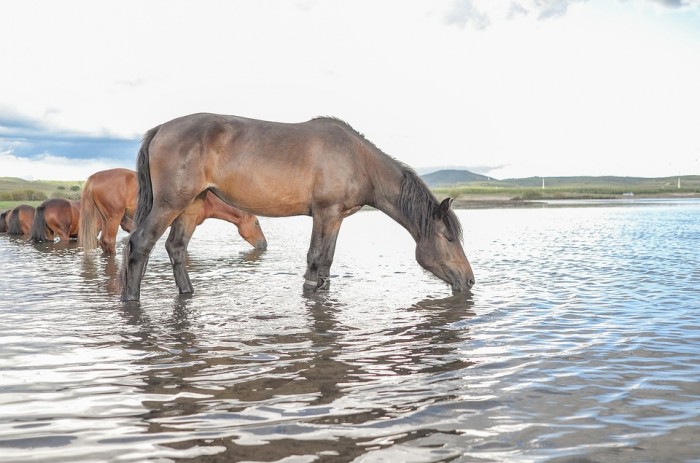
Effects on horses when feeding silage, haylage and hay.
Two experiments were performed, the aim of experiment 1 was to investigate the effects on fluid and acid–base balance, digestion and the effects after an abrupt feed change. In Standardbred horses in race training when feeding silage and hay-only diets from the same cut. The aim of experiment 2 was to investigate the exercise response in Standardbred horses in training when feeding silage and haylage diets.
The first hypothesis was that a silage (40–45% DM) diet compared with a hay (80% DM) diet would affect the faecal water content, change the digestive response and fluid balance and possibly affect the plasma lactate concentration at rest. The second hypothesis was that a silage (40–45% DM) diet compared with a haylage (65% DM) diet would change the exercise response in plasma lactate and total plasma protein (TPP) concentrations.
In experiment 1, five Standardbred geldings were fed forage-only diets: hay (82% dry matter, DM) and silage (45% DM) for 23 days in a crossover design. Total collection of faeces and urine was performed. In experiment 2, six Standardbred geldings were fed forage-based diets: haylage (68% DM) and silage (41% DM) for 17 days in a crossover design.
In experiment 1, horses drank more on the hay than on the silage diet, but total water intake (drinking water in feed) was higher and resting values of total plasma protein (TPP) was lower on the silage diet. Total water output per day did not differ and therefore the estimated evaporation was larger on the silage than the hay diet. The apparent digestibility was higher on the silage than the hay diet. In experiment 2, heart and respiratory rate, TPP and lactate and blood pH did not differ between the haylage and silage diets during and after the exercise test.
In conclusion, feeding silage did not affect faecal water content, but apparent digestibility and estimated evaporative fluid loss were higher on the silage diet compared with the hay diet. The silage did not adversely affect the response to intensive exercise compared with haylage. However, the estimated higher evaporative fluid loss on the silage diet compared with the hay diet might cause an unnecessary challenge during more prolonged exercise.
> From: Muhonen et al., Comparative Exercise Physiology 5 (2008) 133-142 . All rights reserved to Cambridge University Press 2009. Click here for the online summary.


